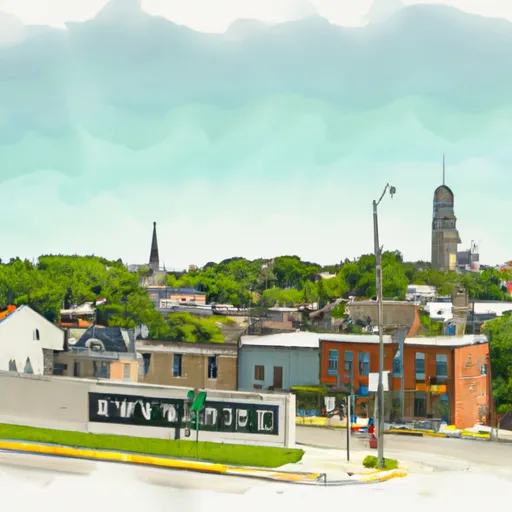°F
°F
mph
Windspeed
%
Humidity











Kirkville, Iowa is a small town located in Wapello County, in the southeastern part of the state. It has a population of around 250 people and offers a peaceful and rural atmosphere. The climate in Kirkville is characterized by four distinct seasons. Summers are typically warm and humid, with average temperatures ranging from the mid-70s to low 90s Fahrenheit. Winters are cold, with average temperatures ranging from the low 20s to mid-30s Fahrenheit.
In terms of hydrology, Kirkville is situated near several lakes and rivers, including Lake Rathbun and the Des Moines River. These bodies of water provide opportunities for boating, fishing, and other water-based activities. Outdoor enthusiasts can also enjoy hiking, camping, and hunting in the surrounding areas, as Kirkville is located near state parks and wildlife management areas.
Overall, Kirkville, Iowa offers a pleasant climate with distinct seasons and various outdoor recreation opportunities for residents and visitors alike.
Weather Forecast
Kirkville receives approximately 926mm of rain per year, with humidity levels near 83% and air temperatures averaging around 11°C. Kirkville has a plant hardyness factor of 5, meaning plants and agriculture in this region thrive during a short period during spring and early summer. Most plants will die off during the colder winter months.
Regional Streamflow Levels
45
Cubic Feet Per Second
5
Cubic Feet Per Second
111
Cubic Feet Per Second
10
Cubic Feet Per Second
Nearby Camping
| Camping Area | Reservations | Toilets | Showers |
|---|---|---|---|
| Dam Site - Bull Shoals Lake | |||
| Ozark Isle - Bull Shoals Lake | |||
| Cranfield - Norfolk Lake | |||
| Bull Shoals State Park | |||
| Lakeview - Bull Shoals Lake | |||
| Oakland - Bull Shoals Lake |



